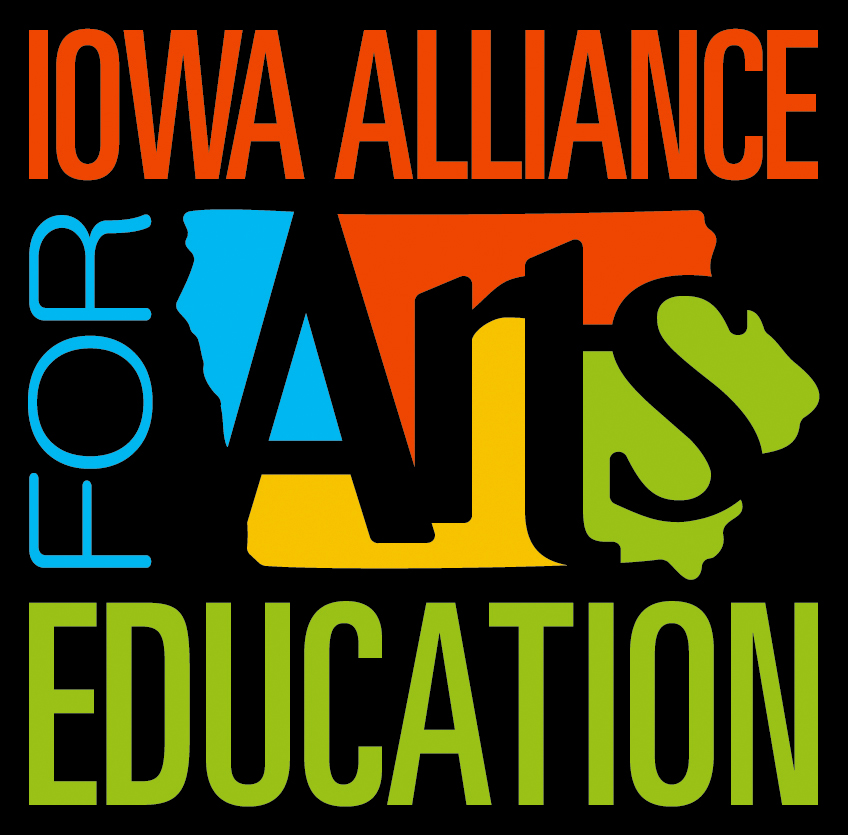Having the best information about COVID-19 and mitigation strategies is vital to student and staff safety as the 2020-21 school year begins. Arts educators and leaders throughout the state are passionate about not only keeping students safe, but moving learning forward and providing high quality instruction during this time. If you’re looking for resources to help your arts educators, the Iowa Alliance for Arts Education is here to help.
We are in this together. Under the Every Student Succeeds Act (ESSA), the visual and performing arts are essential to a “well-rounded” education for all students in our nation. Whether considering the social and emotional well-being of students, nurturing a safe and welcoming school environment, or in providing a well-rounded education for all students as understood and supported by federal and state policymakers, the arts are essential.
IAAE Mentoring Program
To assist beginning fine arts educators, the Iowa Alliance for Arts Education maintains a mentoring program for these teachers at no cost to the local school district. This program offers both on-site and virtual mentoring along with professional development opportunities and professional development scholarships. Administrators will be sent information on the “Model of Excellence” mentoring program the beginning of August.
We hope the following information proves useful. Please contact the Iowa Alliance for Arts Education if you need further information or we can assist you in any way.
Return to Learn Considerations
In any return to learn plan, it’s imperative to maintain a comprehensive curriculum for the sake of a well-rounded education for students. Consider the following teaching and learning practices in arts classrooms as you adapt for the 2020-2021 school year. Discipline-specific resources are included below these return to learn considerations:
In-Person Learning Considerations:
- Follow CDC safety guidelines for how to protect yourself and others, and include these measures into classroom routines and curriculum, such as:
- Wash your hands often
- Avoid close contact
- Cover your mouth and nose with a cloth face cover when around others
- Always cover your mouth and nose with a tissue when you cough or sneeze or use the inside of your elbow.
- Clean AND disinfect frequently touched surfaces
- Alter scheduling and physical spaces to follow health and safety guidance.
- Limit interactions and physical contact between students by reducing class sizes and student groups when able.
- Mark learning areas for the sake of physical separation between students, i.e. using tape to mark chair locations.
- Provide for increased distance between students during learning activities involving increased physical or breathing activity. Weather permitting, move learning activities outside.
- Limit the use of storage areas or other locations (i.e. instrument storage lockers, kiln rooms) that prevent students and staff from adequately social distancing.
- Consider new approaches to showcasing student work that allow for students, families, and the community to follow local guidelines, such as viewing performances digitally or offering individualized experiences.
- Allow for students to use personal or individually assigned supplies and equipment. Use CDC sanitation guidelines and schedule additional time to disinfect any shared items. Materials storage should maintain an adequate distance from others’ to allow social distancing in transitions and reduce chances of contamination.
- COVID-19 Instrument Cleaning Guidelines by NAfME, NFHS, and the NAMM Foundation.
Online Learning Considerations:
- Work to foster and maintain positive relationships between staff and students during online learning.
- Ensure any necessary equipment or supplies are made available to students for home learning activities.
- Utilize a learning management system to effectively communicate between teachers and students and to manage learning activities and feedback.
- Engage in distance learning activities that allow for collaboration between students.
- Use resources that honor independence and choice for students in their learning.
- Support student learning with authentic activities allowing them to engage in their local communities.
- Utilize culturally responsive pedagogy to engage students in relevant learning and allow for diverse viewpoints.
- Be mindful of copyright law and compliance as the development and preparation of artistic works moves to a virtual setting.
Hybrid Learning Considerations:
- Identify essential learning standards and outcomes, and identify aspects of the curriculum which are better suited for online learning or in-person learning.
- Utilize online learning practices that protects valuable in-person instruction and assessment.
- Continue supporting the activities inherent in the artistic processes outlined in fine arts standards, such as student collaboration, gathering and applying feedback from peers and other sources, and connecting with an audience, virtually or safely in-person.
Additional Resources
- Iowa Department of Education General Resources for Educators Moving to Online Learning
- Maryland Department of Education Arts Together Resource
- Georgia Department of Education Digital Teaching and the Arts
Visual Arts Education Guidance
- National Art Education Association Remote Learning Toolkit
- Returning to the Visual Arts and Design Classroom
Theater Education Guidance
- Educational Theatre Association Recommendations for Reopening School Theatre Programs: Theatre Education in the Time of COVID-19
- Educational Theatre Association Theatre Resources for Creating Online Learning
Music Education Guidance
- American Bandmasters Association Student Safety and Music Program Continuation Ideas
- American Choral Directors Association COVID-19 Response Committee Report
- American String Teachers Association Resuming Instruction During COVID-19: Classroom and Studio
- Iowa Bandmasters Association COVID-19 Response
- Iowa Bandmasters Association COVID-19 Rehearsal Safety Summary
- Iowa High School Music Association Return to Learn Guidance for the Music Classroom: Band, Choir and Orchestra
- Iowa Music Educators Association COVID-19 and Virtual Teaching
- National Association for Music Education Virtual Online Resources for Music Educators
- National Federation of State High School Associations Guidance for a Return to High School Marching Band
- NFHS and NAfME Fall 2020 Guidance for Music Education
Dance Education Guidance
